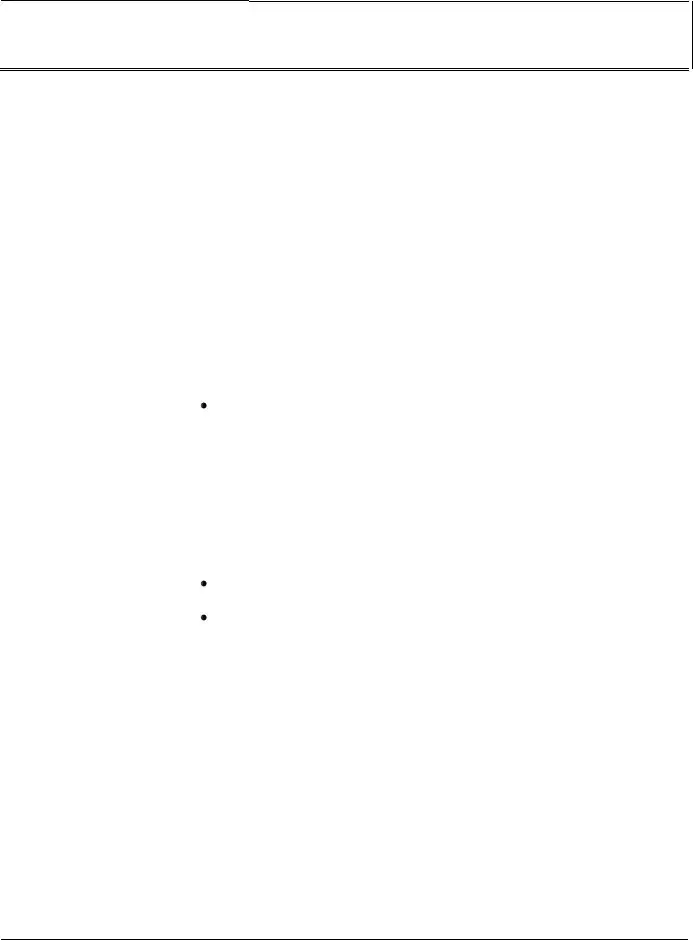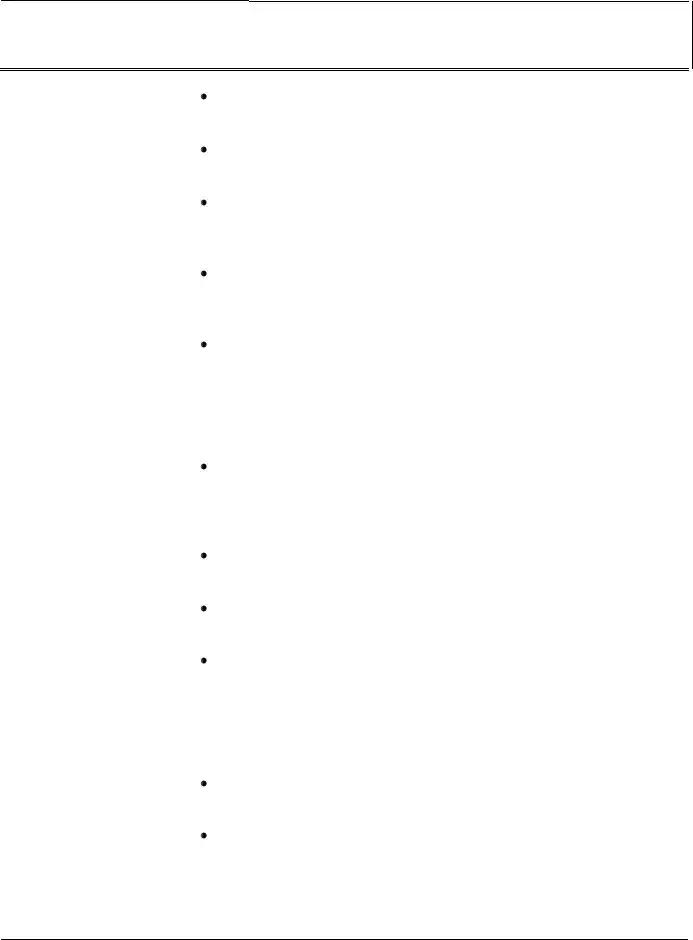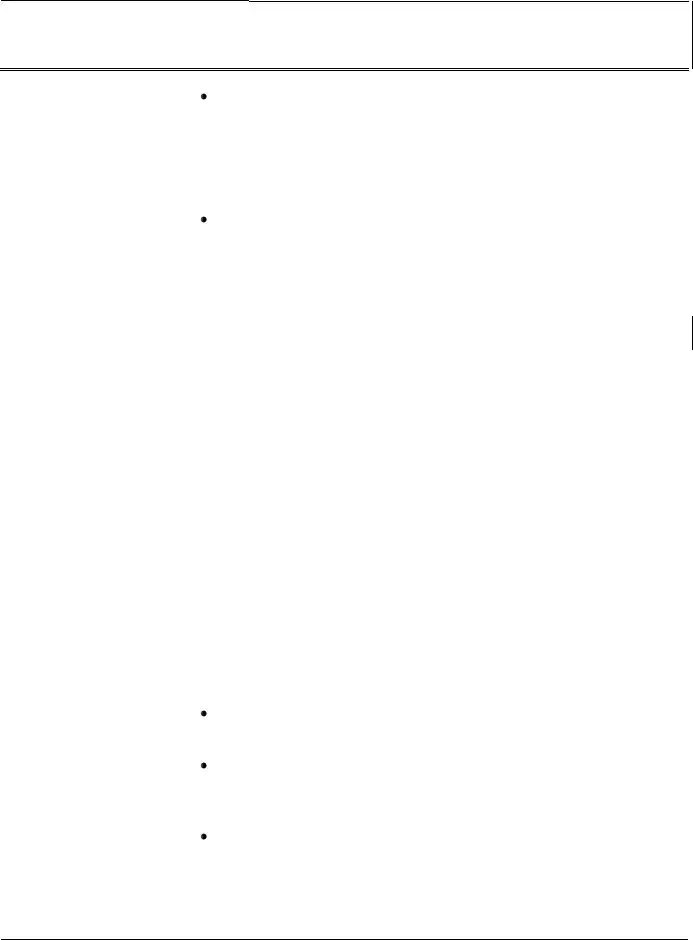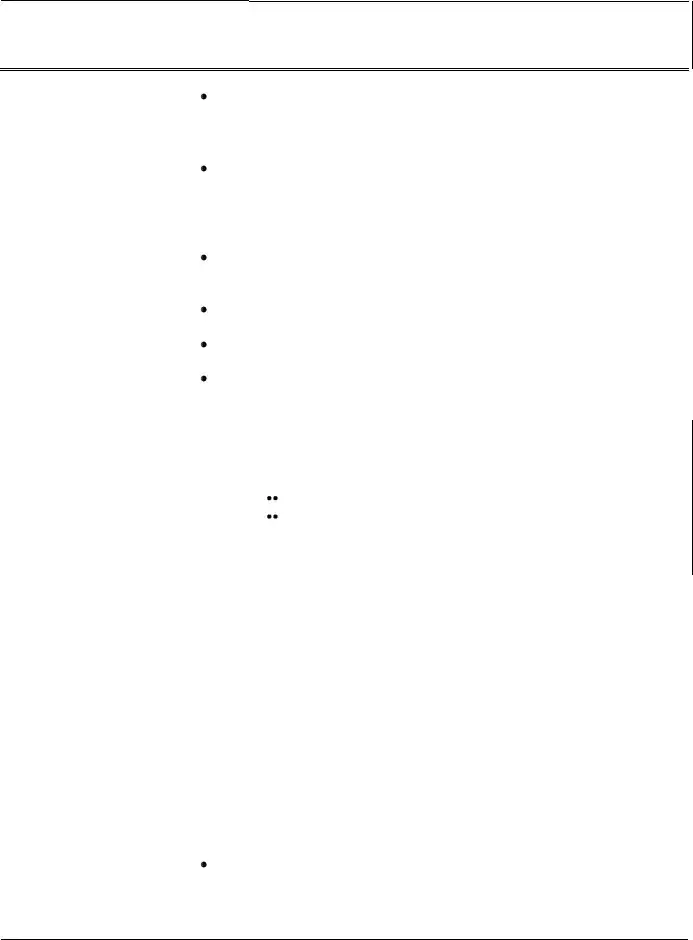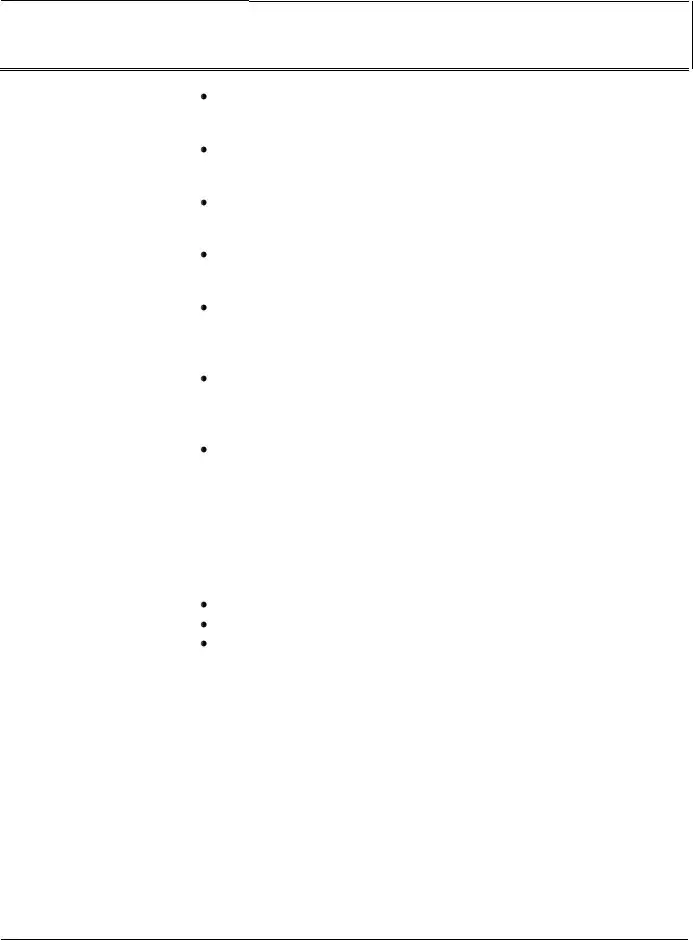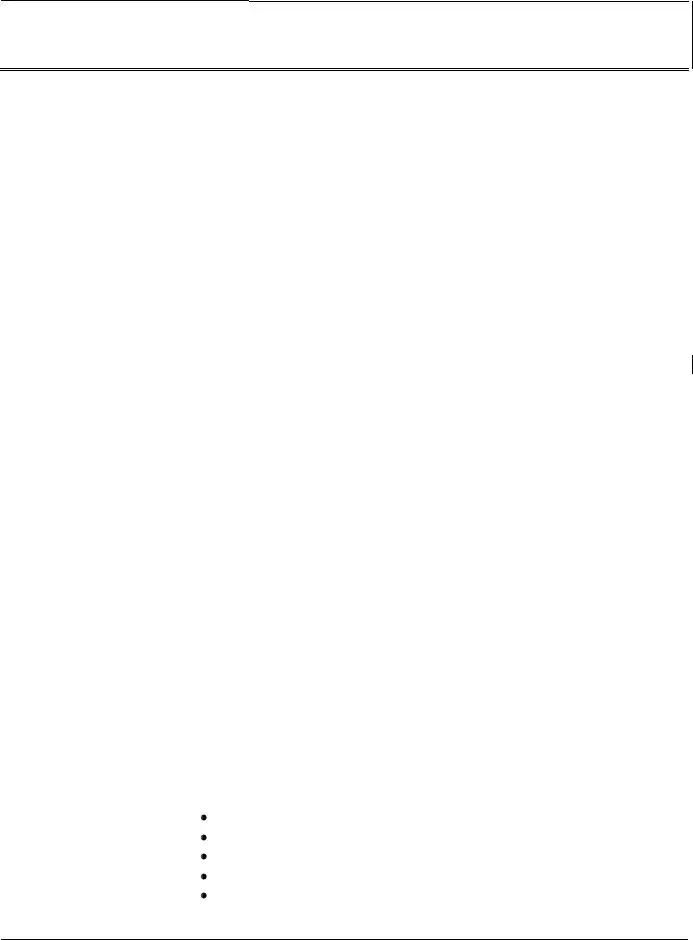|
|
ASB 2013-004 |
ASM 135 |
1 of 9 |
HOME HELP PROVIDERS |
12-1-2013
INTRODUCTION
The items in this section apply to both individual and agency provid- ers.
PROVIDER
SELECTION
The client has the right to choose the home help provider(s). As the employer of the provider, the client has the right to hire and fire pro- viders to meet individual personal care service needs. Home help services is a benefit to the client and earnings for the provider.
The determination of provider criteria is the responsibility of the adult services specialist.
Home help services cannot be paid to:
A spouse caring for a spouse or a parent caring for an unmarried child under 18 (responsible relative).
Note: Couples who are separated must provide verification
that they are no longer residing in the same home
(unavailable). Verification may include their driver’s license, rent receipt or utility bill reflecting their separate mailing address. A spouse who is legally separated from a spouse cannot be paid to provide home help.
A minor (17 and under).
Fiscal Intermediary (FI).
Note: Fiscal intermediary services is defined by CMH as services that assist the client in meeting their goals of
community participation and integration, independence or productivity, while controlling the client’s individual budget and
choosing staff who will provide the services and supports identified in the individual plan of service. The fiscal intermediary facilitates in the employment of service providers and is not the provider of direct hands on care services.
Home help providers who also provide day-care services must not provide both services concurrently; see BEM 704.
Example: Home help services cannot be provided from 8:00 a.m. until 10:00 a.m., if the provider is also providing day-care services during that time frame.
ADULT SERVICES MANUAL |
STATE OF MICHIGAN |
DEPARTMENT OF HUMAN SERVICES
|
|
ASB 2013-004 |
ASM 135 |
2 of 9 |
HOME HELP PROVIDERS |
12-1-2013
PROVIDER
CRITERIA
Determine the provider's ability to meet the following minimum cri- teria in a face-to-face interview with the client and the provider:
Age
The provider must be 18 years and older.
Ability
To follow instructions and home help program procedures.
To perform the services required.
To handle emergencies.
Physical Health
The provider’s health must be adequate to perform the needed ser- vices.
Knowledge
The provider must know when to seek assistance from appropriate sources in the event of an emergency.
Personal
Qualities
The provider must be dependable and able to meet job demands.
Training
The provider must be willing to participate in available training pro- grams if necessary.
Home help payment may be terminated if the provider fails to meet any of the provider criteria.
PROVIDER
INTERVIEW
An initial face-to-face interview must be completed with the home help provider. A face-to-face or phone contact must be made with the provider at the six month review or redetermination to verify ser- vices are being furnished.
Explain the following points to the client and the provider during the initial interview:
ADULT SERVICES MANUAL |
STATE OF MICHIGAN |
DEPARTMENT OF HUMAN SERVICES
ASB 2013-004
ASM 135 |
3 of 9 |
HOME HELP PROVIDERS |
12-1-2013
The provider is employed by the client not the State of
Michigan.
As the employer, the client has the right to hire and fire the provider.
A provider who receives public assistance must report all income received as a home help provider to their family independence specialist or eligibility specialist.
The client and provider are responsible for notifying the adult services specialist within 10 business days of any change in providers or hours of care.
The provider and/or client is responsible for notifying the adult services specialist within 10 business days if the client is hospitalized.
Note: Home help services cannot be paid the day a client is admitted into the hospital but can be paid the day of discharge.
The provider must keep a log of the services provided on the DHS-721, Personal Care Services Provider Log and submit it
on a quarterly basis. The log must be signed by both the provider and client or the client’s representative.
All earned income must be reported to the IRS; see
www.irs.gov.
No federal, state or city income taxes are withheld from the warrant.
Parents who are caring for an adult child do not have FICA withheld.
Note: Parents who wish to have FICA withheld must be assigned in ASCAP as other relative in the Provider Assignment screen.
All individual providers will receive a W-2 by the Michigan
Department of Community Health.
Provider must display a valid picture identification card and social security card.
ADULT SERVICES MANUAL |
STATE OF MICHIGAN |
DEPARTMENT OF HUMAN SERVICES
ASB 2013-004
ASM 135 |
4 of 9 |
HOME HELP PROVIDERS |
12-1-2013
The client and provider must sign the MSA-4676, Home Help Services Statement of Employment, before payments are authorized.
Note: Providers determined to be a business/agency are exempt from signing the MSA-4676.
All providers must sign a MSA-4678, Home Help Services
Provider Agreement, before payments are authorized.
Note: Providers are required to complete and sign the agreement only once. If there is a signature date on Bridges/ASCAP provider screen, another MSA-4678 does not need to be completed and signed.
PROVIDER
ENROLLMENT
All home help providers must be enrolled in Bridges by a designee at the local county DHS office prior to authorizing payment. Once a provider is enrolled, Bridges will assign the provider a seven digit identification number. The adult services specialist must allow 24 hours from the time of enrollment for Bridges to interface with
ASCAP.
Instructions for enrolling a provider on Bridges are found on the Office of Training and Staff Development home page. Instruc- tions on assigning a provider in ASCAP are in the ASCAP User Guide located on the adult services home page.
PERSONAL CARE SERVICES PROVIDER LOG (DHS-721)
Each individual provider must keep a log of home help services delivered. The DHS- 721 is used for this purpose.
Tasks on the provider logs are automatically marked with an X when printed from ASCAP based on the client’s home help
functional assessment.
The provider must indicate what services were provided and on which days of the month.
ADULT SERVICES MANUAL |
STATE OF MICHIGAN |
DEPARTMENT OF HUMAN SERVICES
ASB 2013-004
ASM 135 |
5 of 9 |
HOME HELP PROVIDERS |
12-1-2013
The client and the provider must sign the log when it is completed to verify that the services approved for payment were delivered.
The log must be submitted to the local office quarterly. Provider logs must be received within 10 business days after the last service date on the log. Failure to do so will result in suspension of payment.
The adult services specialist must initial and date the log upon receipt, demonstrating review of the log.
Retain the log in the client’s case record.
A separate log is required for each provider.
Incomplete logs must be returned to the client/provider for completion.
Agency/business providers have the option of submitting monthly invoices in lieu of the DHS-721, Provider Log. Each invoice must specify the following:
The service (s) provided, and
The date(s) of service.
See ASM 136, Agency Providers.
HOME HELP STATEMENT OF EMPLOYMENT (MSA-4676)
The purpose of the MSA-4676, Home Help Services Statement of Employment, is to serve as an agreement between the client and provider which summarizes the general requirements of employ- ment. The form is completed by the adult services specialist as part of the provider enrollment process.
An employment statement must be signed by each provider who renders service to a client.
The statement of employment does the following:
Confirms an understanding of the personal care services provided, how often services are provided, and wages to be paid.
ADULT SERVICES MANUAL |
STATE OF MICHIGAN |
DEPARTMENT OF HUMAN SERVICES
ASB 2013-004
ASM 135 |
6 of 9 |
HOME HELP PROVIDERS |
12-1-2013
Requires positive identification of the provider by means of a picture ID and social security card.
Documents an understanding by both parties that the client, not the State of Michigan, is the employer of the provider.
Stipulates that the client must report any changes in the work schedule to the adult services specialist.
Instructs the provider to repay the State of Michigan for services they did not provide.
Informs the provider that a DHS-721, Personal Care Services Provider Log, must be completed and returned to the specialist on time to avoid delay in payment.
Informs a provider receiving public assistance that this employment must be reported to the Department of Human Services
Requires the client and provider must sign the MSA-4676 statement indicating their understanding of the terms of the agreement.
Distribution of Employment Statement
The adult services specialist will make two copies of the completed and signed form and distribute as follows:
Give one copy to the client.
Give one copy to the provider.
Place the original form in the client’s case record.
MEDICAL ASSISTANCE HOME HELP PROVIDER AGREEMENT (MSA-4678)
Federal regulations require that all providers of Medicaid covered services complete and sign a provider agreement. This agreement states providers will abide by Medicaid policies in providing services to program clients and in receiving payment from the program. In order to meet this requirement, the Michigan Department of Community Health (MDCH) developed the MSA- 4678, Medical Assistance Home Help Provider Agreement.
ADULT SERVICES MANUAL |
STATE OF MICHIGAN |
DEPARTMENT OF HUMAN SERVICES
ASB 2013-004
ASM 135 |
7 of 9 |
HOME HELP PROVIDERS |
12-1-2013
All home help services providers must have a completed and signed MSA-4678 on file with the MDCH in order to receive pay- ment. Providers are required to complete and sign the agreement only once. The signed agreement is valid for all counties across the state of Michigan. Home help agencies must complete this agree- ment in addition to meeting all other agency requirements. The MSA-4678 must be signed by the owner of the agency; see ASM 136, Agency Providers.
Procedure
The adult services specialist will furnish a copy of the MSA-4678 with instructions to all new individual and agency providers at the time of enrollment. Follow the provider enrollment process by com- pleting a DHS-2351X, Provider Enrollment/Change Request. The designated staff who enroll home help providers will insert the MSA-4678 signature date in Bridges.
Before forwarding the MSA-4678 to the MDCH, the adult services specialist must enter the seven digit provider identification number in the For Official Use Only box at the top of the form. Verify the signature date is stored in Bridges by checking ASCAP under the
Assign Provider Tab.
Send the MSA-4678 via ID mail to:
Provider Enrollment Lewis Cass Building 3rd Floor
320 S. Walnut
Lansing, Michigan 48913
MDCH Provider Enrollment scans the provider agreements and files them under the provider identification numbers.
Locating MSA-
4678 Signature
Date in ASCAP
To locate the MSA-4678 signature date in ASCAP:
Select Client.
Select the HIS $ icon.
Click on the Provider/TimeTask/Service Plan button. Highlight the provider.
Locate the 4678 Date field. This is a read only field, reflecting what is in Bridges.
ADULT SERVICES MANUAL |
STATE OF MICHIGAN |
DEPARTMENT OF HUMAN SERVICES
ASB 2013-004
ASM 135 |
8 of 9 |
HOME HELP PROVIDERS |
12-1-2013
If there is a date in the signature date field, a MSA-4678 has been completed. If there is not a date in this field, the adult services spe- cialist must contact the provider to complete the provider agree- ment. A negative action must be sent to the client to inform them that payment must be suspended until a provider agreement is received.
Note: The signature date can also be found in ASCAP under the Client’s for Provider tab. Access this screen by clicking on the utilities menu and selecting Client’s for Provider. Search by the
provider name or identification number and click on the provider name. The provider information is displayed on the detail screen, including the MSA-4678 signature date.
LOCAL OFFICE
INDIVIDUAL HOME
HELP PROVIDER
HOURLY RATE
Each local DHS office has an established individual home help pro- vider rate. Specialists must not authorize above or below the estab- lished rate.
Cases with hourly rates above the established county rate must be substantiated by an approval letter (DCH-1785) from the Michigan Department of Community Health. If there is not an approval from MDCH, the hourly rate must be lowered to the established rate of the county.
PROVIDER
INCOME
VERIFICATION
Requests received by the local office for verification of provider income or employment should be forwarded to MDCH at:
Michigan Department of Community Health
Long Term Care Services Policy Section
Capital Commons Building, 6th Floor
P.O. Box 30479
Lansing, Michigan 48909
OR
FAX to 517-335-7959
ADULT SERVICES MANUAL |
STATE OF MICHIGAN |
DEPARTMENT OF HUMAN SERVICES
|
|
ASB 2013-004 |
ASM 135 |
9 of 9 |
HOME HELP PROVIDERS |
12-1-2013
JOINT POLICY
DEVELOPMENT
The Adult Services Manual (ASM) policy has been developed jointly by the Michigan Department of Community Health (MDCH) and the Department of Human Services (DHS)
ADULT SERVICES MANUAL |
STATE OF MICHIGAN |
DEPARTMENT OF HUMAN SERVICES
